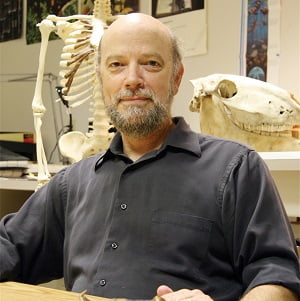Leader News Emeritus Professor Anthony Helps Confirm 5,000-Year History of Horseback Riding
Professor Emeritus and Curator Emeritus of Anthropology David Anthony continues to forward research he focused on during his  years teaching at the College. Anthony was part of a research team that recently published their findings on the earliest evidence for horseback riding yet found. Unveiled last Friday, the project was a featured story at the annual American Association for the Advancement of Science (AAAS) meeting in Washington DC last weekend.
years teaching at the College. Anthony was part of a research team that recently published their findings on the earliest evidence for horseback riding yet found. Unveiled last Friday, the project was a featured story at the annual American Association for the Advancement of Science (AAAS) meeting in Washington DC last weekend.
The research helps confirm the origins of horseback riding date back 5,000 years. We asked David about this latest project.
“I have been working on horse domestication and, specifically, the beginning of horseback riding since the 1980s,” he said. “While at Hartwick, I visited the Institute of Zoology in Kyiv in 1989 to examine microwear made by bits on horse teeth in order to determine when and where horses were first bitted.”
With his collaborator and spouse, Dorcas Brown, they studied remains of bits found on horse teeth taken from old and modern horses, as well teeth from horses that were never bitted. Two undergraduates, Maile Rehnberg ’90 and Laura Hallgren ’94, assisted on this National Science Foundation-funded project.
After retiring from teaching in 2018, he contributed to a horse DNA study published in Nature magazine in 2021 that showed horses from areas in today’s Russia and Ukraine – belonging to the Yamnaya culture from 3300-2600 BCE – were the proximate ancestors of all modern domesticated horses.
A different 2021 study in Nature found that dairy peptides in teeth of ancient individuals showed that some Yamnaya people consumed horse milk (milking is clear proof of domestication).
“In the most recent paper featured at the AAAS conference, I joined a team that presented research showing than more than 30% of the Yamnaya people in Bulgaria, Romania, and Hungary habitually rode horses,” he said. “This was based on the study of bones and muscle attachments of ancient human riders.
“Together, the evidence from bit wear, ancient horse DNA, horse milk evidence in Yamnaya teeth, and now from riding-related pathologies in human bones, a strong case is made for the habitual use of horses as mounts by 3000 BCE, and probably before that, confirming our earlier efforts.”
Suffice it to say, Anthony is pleased with these results.
“This is a very welcome result, and we remember the Hartwick students who worked with us back when riding in 3000 BCE was hotly debated,” he said. “They helped push the envelope, and it was fun working with them.”
For more, check out the full text in Science Advances or these stories from National Public Radio and PBS Newshour.